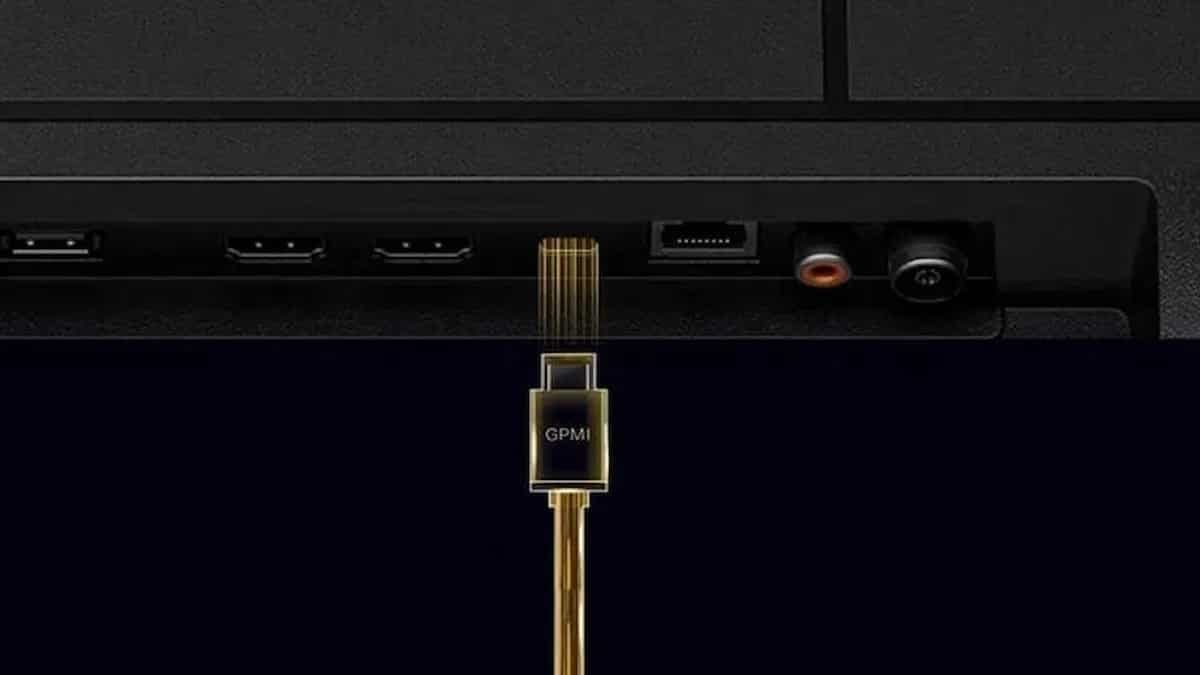A new standard for audiovisual connectivity is emerging from China with the potential to revolutionize the electronics market. Its name is GPMI (General Purpose Media Interface), and it has the backing of tech giants like Huawei, TCL, Sharp, and Hisense.
For years, HDMI and DisplayPort connections have been the undisputed champions of the audiovisual ecosystem, allowing for high-definition video and audio transmission between televisions, monitors, consoles, and computers. However, this dominance may be coming to an end. GPMI proposes a faster, more versatile, and powerful alternative that promises to simplify how we connect our devices.
Speed, Power, and Bidirectionality: The Keys to GPMI
The GPMI standard has a clear advantage: it offers a bandwidth of up to 192 Gbps, double that of HDMI 2.2 (96 Gbps) and significantly higher than DisplayPort 2.1 (80 Gbps). This speed allows for uncompressed 8K video transmission and gaming at 4K with ultra-high refresh rates, without relying on techniques like DSC (Display Stream Compression), which can introduce quality loss.
But GPMI stands out not only for its data transfer capability. It can also deliver up to 480W of power through a single cable (with a USB Type-B connector), enough to power large-format monitors, workstations, or even virtual reality devices, eliminating the need for additional power outlets. In the case of the USB-C connector, the power delivery is reduced to 240W, matching the maximum of the DisplayPort 2.1 standard.
Additionally, GPMI has been designed to offer simultaneous bidirectional communication, allowing for data transmission and reception without sacrificing performance. Its compatibility with native USB simplifies peripheral connectivity, while dynamic bandwidth management provides unprecedented flexibility: channels can be reassigned based on usage needs, prioritizing video, data, or power in real-time.
Technical Comparison
| Interface | Maximum Bandwidth | Power Delivered |
|---|---|---|
| HDMI 2.1 | 48 Gbps | No power delivery |
| HDMI 2.2 | 96 Gbps | No power delivery |
| DisplayPort 2.1 | 80 Gbps | Up to 240W |
| GPMI (USB-C) | 96 Gbps | Up to 240W |
| GPMI (USB-B) | 192 Gbps | Up to 480W |
A Commercially Minded Project
The most striking aspect of GPMI is that it is not a laboratory experiment or an academic proposal. It is an industrial initiative backed by manufacturers with a strong presence in global markets, particularly in sectors like televisions, laptops, monitors, and mobile devices. This significantly increases the chances that GPMI will make its way into commercial products in a relatively short time frame.
Another advantage is its foundation on USB-C connectors, which are widely adopted today. This decision would facilitate a faster and more natural transition from current standards, minimizing the need for proprietary adapters or cables.
The Future of Connectivity?
As of today, the main challenge for GPMI is its adoption. To establish itself as a global standard, it needs to be included in the roadmap of international manufacturers and have the support of certification organizations. However, the current landscape—marked by the need to transmit higher resolutions, simplify connections, and reduce energy consumption—seems particularly favorable for its success.
In a context where devices tend toward maximum integration and immersive experiences (such as gaming, augmented reality, or advanced multimedia environments) demand more robust connectivity, a solution like GPMI is not just welcome, but almost essential.
Conclusion
GPMI could mark a turning point in the world of digital connectivity. If it delivers on its promises—extremely high speed, powerful energy delivery, bidirectionality, security, and flexibility—we might be looking at the standard that replaces HDMI and DisplayPort in the next generation of smart devices.
The question is no longer whether we need it, but when we will see it integrated into our everyday devices.

